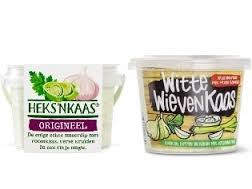In law, perhaps one of the most famous aphorisms is “I know it when I see it”, which Justice Potter Stewart used to describe his threshold test for obscenity (in Jacobellis v. Ohio, 378 U.S. 184 (1964)).
The CJEU, in case C‑310/17, delivered a decision on copyright which in a way confirms this aphorism and might have serious consequences for trademarks.
Levola Hengelo BV, which manufactured a cream cheese with fresh herbs called Heksenkaas (“witch’s cheese”) sued Smilde Foods BV, over an analogous product called ‘Witte Wievenkaas’, alleging that such product infringed its copyright “in the taste” of Heksenkaas. Although in the past the Dutch Supreme Court had recognized copyright protection to a perfume (cf. Dutch Supreme Court, June 16, 2006 on the perfume Trésor of Lancôme), the Regional Court of Appeal, Arnhem-Leeuwarden, Netherlands, confronted with the possibly more elusive concept of “taste”, asked the CJEU if a taste of a food product might constitute a ‘work’ according to the Infosoc Directive and could thus be eligible for copyright protection.
Perhaps unsurprisingly, the CJEU held that current EU law precludes the taste of a food product from being protected by copyright, and national legislation cannot be interpreted in such a way that it grants copyright protection to such a taste.
To reach this conclusion, the CJEU used a two-prong argument. On the one side it held that for a “work” to be copyrightable, its subject matter must be represented in a manner that makes it identifiable with sufficient precision and objectivity. This is because both the authorities responsible for ensuring that the exclusive right is protected and any economic operator must be able to identify the subject matter protected clearly and precisely (§ 40-41). However, taste fails this test, because unlike literary, pictorial, cinematographic or musical work, which are precise and objective forms of expressions, taste is subjective and variable since it depends, inter alia, on factors particular to the person tasting the product concerned, such as age, food preferences and consumption habits, as well as on the environment or context in which the product is consumed (ever tried how chocolate tastes after a strenuous climb?).
On the other side (actually the CJEU uses the adverb “moreover”) , the CJEU noted that the state of scientific development did not provide technological means to identify precisely and objectively a taste of a food product, which enables it to be distinguished from the taste of other products of the same kind (at § 43). This additional test, as also argued below, may not have been necessary, because once the CJEU had pointed to the inherent subjectivity and variability of taste, it did not really need to add further criteria.
What is remarkable is that in a copyright -related case, the CJEU used the same line of reasoning it followed in two famous trademark cases, i.e. Sieckmann ((C‑273/00, at § 55) and Chartered Institute (C‑307/10, a.k.a. IP Translator, at § 51 ), where it held that trademarks could be registered only if the signs themselves were represented in a clear, precise, self-contained, easily accessible, intelligible, durable and objective manner (Sieckmann) and the goods and services for which protection was sought were identified with sufficient clarity and precision (IP translator); this was to ensure that competent authorities and economic operators were able to determine the extent of the protection conferred by the trademark.
EUIPO, long before the Levola decision, had already stated its “distaste” for scent marks, as clearly indicated in its Guidelines:” Article 3(9) EUTMIR clarifies that the filing of a sample or a specimen does not constitute a proper representation of a trade mark. The reason is that these cannot be clearly and precisely represented and are not generally available for inspection on the Register by means of commonly available technology. For example, a sample of a scent would not be a durable and stable representation of a trade mark, thereby not complying with the clarity and precision requirement” (Guidelines for Examination in the Office, Part B, Examination, Page 4).
However, EUIPO’s justification is the lack of commonly available technology (which, truth to be told, echoes the “moreover ” by the CJEU), while, after Levola, it seems arguable that regardless of the existence today (or in the future) of commonly available technology, which might provide for a stable and durable “representation” (in a certain formula or chemical composition or else), still this “representation” would be insufficient, for it would be rendered in a vacuum, given that it would never be able to recreate the full spectrum of what a scent or a taste is for any given individual.
Thus, while we can all agree on what the general taste of cheese is as compared to fish, with Levola the CJEU went to the core of what a “taste” (or a scent) is, and basically concluded that “I know it when I taste/smell it” it is still the test.
_____________________________
To make sure you do not miss out on regular updates from the Kluwer Trademark Blog, please subscribe here.



